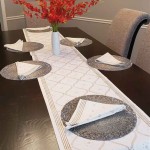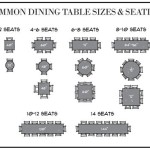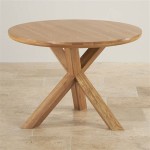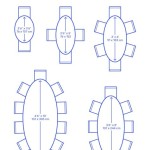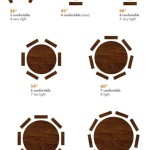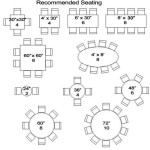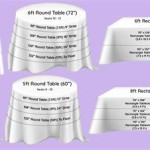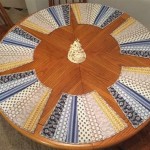How To Use Tablecloth Clips: A Comprehensive Guide
Tablecloth clips are simple yet indispensable tools for securing tablecloths to tables, especially during outdoor events or in environments prone to breezes. They prevent the tablecloth from slipping, sliding, or blowing away, ensuring a neat and presentable table setting. This article provides a comprehensive guide on how to effectively use tablecloth clips, covering various types, proper usage techniques, and factors to consider for optimal performance.
Understanding Different Types of Tablecloth Clips
The market offers a diverse range of tablecloth clips, each designed with specific features and materials to suit different table styles and aesthetic preferences. Understanding these differences is crucial for selecting the most appropriate clips for a given situation.
Stainless Steel Clips: These are perhaps the most common type, valued for their durability and resistance to rust. Stainless steel clips typically feature a spring-loaded mechanism that allows them to grip the table edge securely. They are often polished to a shine, providing a clean and contemporary look.
Plastic Clips: Plastic clips are a more economical option, available in various colors and designs. While they may not be as durable as stainless steel, they are lightweight and suitable for casual use. Plastic clips are typically made from materials like acrylic or polypropylene, offering some degree of weather resistance.
Decorative Clips: Decorative clips prioritize aesthetics, featuring ornate designs, intricate patterns, or embellishments like beads or crystals. These clips are often made from materials like metal alloys or resin and are intended to complement the overall table setting. While they may not offer the same level of gripping strength as utilitarian clips, they add a touch of elegance.
Adjustable Clips: Designed for tables with varying thicknesses, adjustable clips offer a wider range of compatibility. These clips typically feature a screw mechanism or a sliding component that allows the user to adjust the grip to accommodate different table edge dimensions.
Weighted Clips: Weighted clips forego the traditional clamping mechanism and instead rely on weight to hold the tablecloth in place. These clips are typically attached to the corners of the tablecloth and hang down, using gravity to prevent the fabric from blowing away. They are often made from metal or stone and can be quite decorative.
Proper Techniques for Attaching Tablecloth Clips
Regardless of the type of clip chosen, proper attachment is crucial for ensuring that the tablecloth remains securely in place. Incorrect placement or insufficient clips can lead to the tablecloth slipping, defeating the purpose of using clips altogether.
Determining the Number of Clips Needed: The number of clips required depends on the size of the tablecloth and the severity of the conditions. For small to medium-sized tables in mild weather, four clips, one at each corner, may suffice. However, for larger tables or in windy conditions, more clips may be necessary. A general rule of thumb is to place clips every 12 to 18 inches along the table edge to ensure adequate support.
Positioning the Clips: Clips should be positioned evenly around the table to distribute the weight of the tablecloth and maintain a balanced appearance. Ensure that the clips are firmly attached to both the tablecloth and the table edge. The gripping mechanism should be engaged securely to prevent slippage.
Adjusting the Tablecloth: Before attaching the clips, ensure that the tablecloth is properly centered on the table and that the overhang is even on all sides. Once the clips are in place, make any necessary adjustments to ensure a smooth and wrinkle-free appearance.
Dealing with Thick Tablecloths: Some tablecloths, particularly those made from heavy materials like vinyl or thick cotton, may be difficult to grip with standard clips. Adjustable clips or clips with a wider opening may be necessary to accommodate the thickness of the fabric.
Considerations for Round Tables: When using tablecloth clips on round tables, distribute the clips evenly around the circumference. Pay particular attention to the sections of the tablecloth that are most vulnerable to wind, such as those facing open areas or doorways.
Factors Affecting Tablecloth Clip Performance
Several factors can influence the effectiveness of tablecloth clips. Understanding these factors allows for proactive adjustments and ensures optimal performance in various situations.
Table Surface Material: The material of the table surface can affect the grip of the clips. Smooth, polished surfaces like glass or metal may offer less friction, requiring clips with stronger gripping mechanisms or non-slip pads. Conversely, rough or textured surfaces may provide a more secure grip but could potentially damage the table surface if the clips are too abrasive.
Weather Conditions: Wind is the primary adversary of tablecloths held only by their own weight. Strong winds can easily dislodge clips that are not securely attached or that are insufficient in number. In windy conditions, consider using heavier clips or supplementing the clips with additional weights.
Tablecloth Material: The type of fabric used for the tablecloth also plays a role. Lightweight fabrics like linen or chiffon are more susceptible to blowing in the wind than heavier fabrics like denim or canvas. Choose clips that are appropriate for the weight and texture of the tablecloth.
Clip Maintenance: Regular maintenance is essential for ensuring the longevity and performance of tablecloth clips. Clean the clips periodically to remove dirt, dust, and debris that can accumulate and interfere with their gripping mechanism. Lubricate moving parts with a small amount of oil or silicone spray to prevent corrosion and ensure smooth operation.
Clip Placement Strategy: Strategic placement of clips based on the anticipated wind direction can improve a clip's effectiveness. Consider windbreaks or natural barriers, such as walls or hedges, and place more clips on the side of the table exposed to the prevailing wind. Use of a wind-resistant or weighted tablecloth combined with clips provides additional protection against unfavorable outdoor conditions.
Clip Compatibility: Prior to usage, it is important to ensure the clips are appropriate for the table's edge thickness. Attempting to force a clip onto an edge too thick for it can damage either the table or the clip, or both, and can also render the clip ineffective. Clips that are too loose will not be effective on thinner tables, and may slide off during use. Ensuring proper compatibility prior to usage is essential for optimal performance.
The Impact of Table Shape: The shape of the table influences not only clip number and spacing, but the kind of clip that may prove most effective. Round tables, for example, often work better with more evenly distributed pressure or with clips that are better suited to curved edges. A square or rectangular table may allow for clips placed more directly on the corners, and also along long edges, if needed. The inherent stability of the table design itself may also influence the required clip type or layout pattern for optimal performance.

How To An Easy Solution Prevent Fly Away Tablecloths Diy Outdoor Table Tablecloth Cloth

Flexible Tablecloth Clip Wipe Easy Tablecloths

Easy To Use Stainless Steel Tablecloth Clips Hassle Free Installation Com

16pk Tablecloth Clips For Indoor And Outdoor Use Keep Your Secure Table Cloth Diy At B Q

Choice Stainless Steel Leaf Design Tablecloth Clip For Tables Up To 1 2 Thick 12 Pack

Appetito Stainless Steel Tablecloth Clips Set Of 4

Choice Stainless Steel Tablecloth Clip For Tables Up To 1 4 Thick 12 Pack

16pk Tablecloth Clips For Indoor And Outdoor Use Keep Your Secure Table Cloth Diy At B Q

Olympia Cd931 Table Cloth Clips Catering Appliance Super

Large Tablecloth Clips Usa Based Brand 12 Pack Stainless Steel
Related Posts

